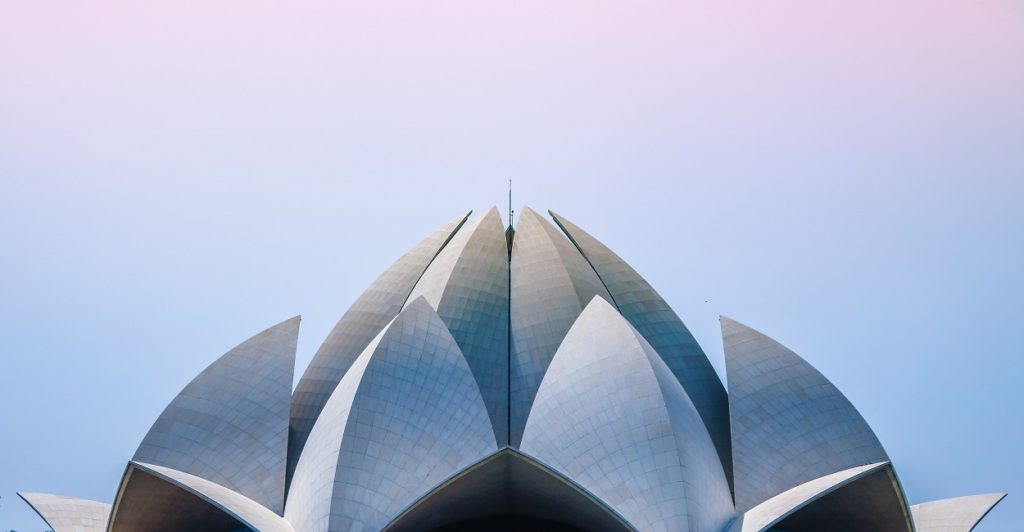The Lotus Temple has received several architectural awards and has been published in various articles in newspapers and magazines. A 2001 article by CNN referred to it as the world’s most visited building.
Today, we are going to discuss about this amazing marvel.
What is Lotus temple?
Now you got an idea of why this civil engineering structure is significant. We are going to dive into the basics now.
- Lotus Temple is located in Delhi, India in December 1986.
- It has become a prominent attraction in the area, notable for its flowerlike shape.
- The Lotus Temple, regardless of religion or any other qualification, is available to everyone.
- The building consists of 27 free-standing marble-clad petals’ arranged to form nine sides in clusters of three, with nine doors opening into a central hall with a height of slightly more than 34 metres and a capacity of 2,500 people.
Also read: Modular building full details
In the next section, let me show you the details on its architecture.
Architecture of Lotus Temple

- This lotus-inspired building, surrounded by lush green landscaped gardens, spreads over 26 acres of land.
- Made from white marble from Greece, it consists of 27 free-standing petals. As was suggested in the Bahai scripture, these petals are arranged in groups of three to give the structure a nine-sided circular shape.
- There are nine entrances opening up to an immense central hall that is about 40 metres high.
- The temple has a capacity of 1300 people for seating and can hold 2500 people at a time.
- Within the Lotus Temple, there are no altars or pulpits, which is a common feature of all Bahai Houses of Worship.
- The interiors are often devoid of statues, portraits, or images.
- The nine pools of water situated around the petals are an eye-catching feature of the temple.
- In a water body, they give the appearance of a half-bloomed lotus and when illuminated in the night, the whole structure looks magnificent.
- This temple was designed by an Iranian-American architect, Fariborz Sahba, while Flint and Neill, a UK firm, carried out the structural design. The ECC Design Company of Larsen & Toubro Limited undertook the construction work for the temple and finished it at a cost of $10 million.
Also read: Golden gate bridge-Golden Gate Bridge: Design and 2 Main Issues full guide
We will find out the history of the building next.
Lotus temple history
This epic structure has an interesting history. Let’s jump right into it.

- The Lotus Temple, also known as Mashriqu’l-Adhkár, is a Bahai House of Worship that was opened to the public in December 1986.
- It is also committed to the unity of faith and humanity, like all other Bahai temples.
- In order to pray, worship and read their scriptures, adherents of all faiths are welcome to assemble here.
- In Delhi, the Lotus Temple is touted as one of the world’s seven largest Bahai Houses of Worship and the only one in Asia.
Also read: Smart building 4 features details
Finally, I will show you the hidden facts about lotus temple
Lesser Known Facts about Lotus temple
- It is among the most visited structures in the world, with about 4.5 million visitors each year.
- On a ₹6.50 postage stamp in India, the temple is featured.
- The lotus symbol was chosen by Fariborz Sahba as it is a traditional symbol in Hinduism, Jainism, Buddhism, and Islam.
- It is the first temple to make use of solar power in the national capital.
- Ardishír Rustampúr, a Bahai follower from Hyderabad in Pakistan’s Sindh province, donated his entire savings to fund the temple’s land purchase.
These are the details of lotus temple. Do you have any queries? Let us know in comments.

